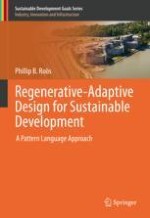
2021 | OriginalPaper | Buchkapitel
1. The State of the Planet: From Anthropocene Dominant to Regenerative-Adaptive Futures
verfasst von : Phillip B. Roös
Erschienen in: Regenerative-Adaptive Design for Sustainable Development
Aktivieren Sie unsere intelligente Suche, um passende Fachinhalte oder Patente zu finden.
Wählen Sie Textabschnitte aus um mit Künstlicher Intelligenz passenden Patente zu finden. powered by
Markieren Sie Textabschnitte, um KI-gestützt weitere passende Inhalte zu finden. powered by